Commissioning a hand-painted watercolour portrait is a unique and special way to preserve a moment in time, whether it be of a beloved pet, a special family moment, or a cherished wedding memory. However, the success of your portrait depends on the photo reference you choose.
As a portrait artist based in Plymouth, Devon, I work with clients across the globe. I often don’t meet my subjects in person, so when creating pet or family portraits, I love to see a range of photos to give me an idea of the subject’s character and colouring, and hear all about them too! When it comes to the portrait, we will ultimately choose one photo as the main reference.
In this blog, I’ll be sharing some tips on how I help my clients choose the perfect photo for their watercolour portrait:
1: Choose a high-quality reference photo for a portrait:
First and foremost, the quality of the photo you choose will greatly impact the quality of the portrait. Make sure to choose a photo that is clear, in focus, and well-lit. Avoid blurry or low-resolution photos – screenshots or images downloaded from social media will likely be too compressed. Please zoom in on the subject’s facial features to check they are in focus. If the photo is blurry or pixelated, it will be difficult for me to capture the details and nuances of the subject’s features. When I create commissions, I love to include every tiny detail – stray hairs, wispy whiskers, the reflection in the eyes – but this is only possible if I can see them in the photo.
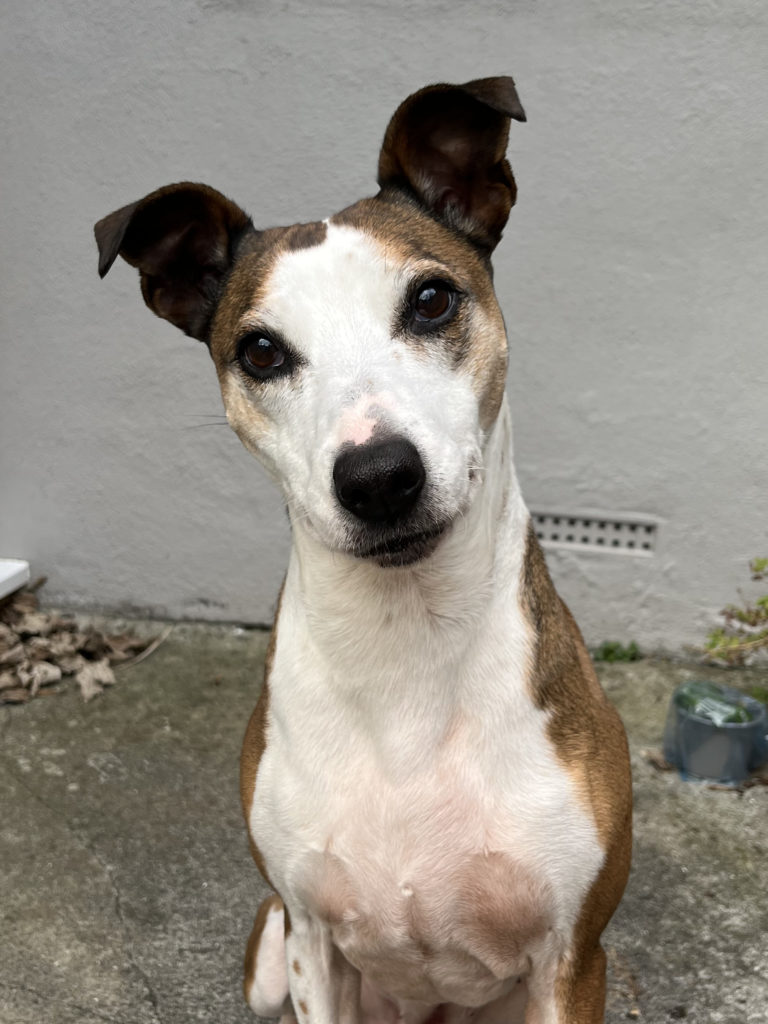

2: Choose a reference photo with good composition:
My signature style is to create portraits that focus on the subject, with no background to distract from your pet or loved one. You won’t have to worry about the background of the photo you choose, as long as the outline of the subject is clear, for example, avoid a black dog on a black background. Ensure there is nothing cut out of the photo that you’d like included – perhaps the top of someone’s head, or a dog’s ear. Take photos from the same level as the subject. It can seem easy to stand above dogs or children and take photos from above, but when taken out of context, this can look strange. Photos taken from their eye level make for a beautiful portrait. Photos where the subject is close up, filling the frame of the photo, is always best!
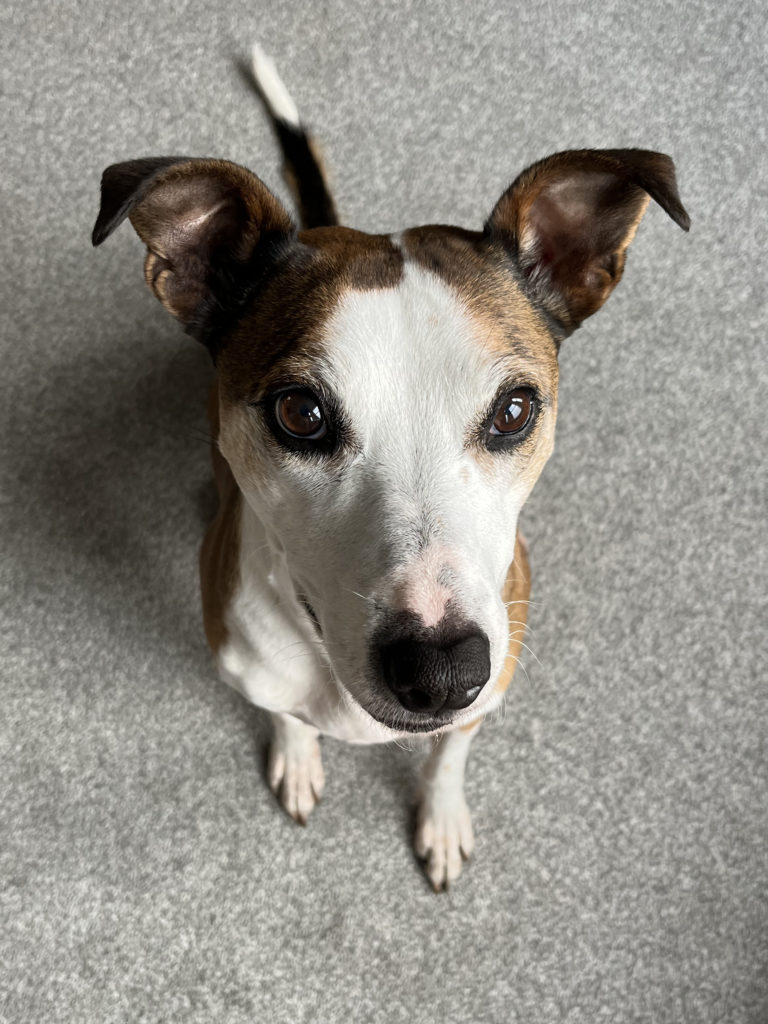
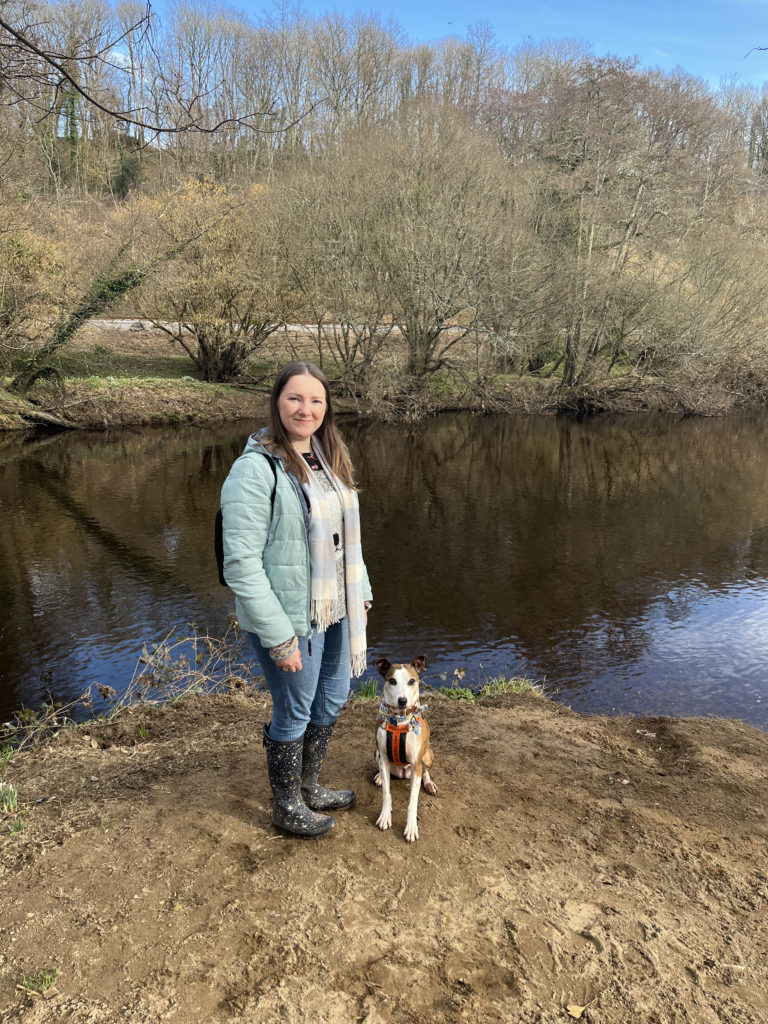
3: Consider the lighting:
Good lighting is crucial in capturing the essence of your subject. When choosing a photo, make sure that it is well-lit. Photos taken in natural light, either outdoors on a cloudy day, or indoors facing a window are the best options, as they will capture the subject’s features in the most natural way possible. If the photo is taken indoors, make sure that the lighting is not too harsh, too dim, or too yellow. The best time to take outdoor photos is on a cloudy day that is not too bright. If the sunlight is too bright, both people and pets may squint! You could also try taking photos during the ‘golden hour’, which is the hour just before sunset, or after sunrise, when the light is soft and warm.
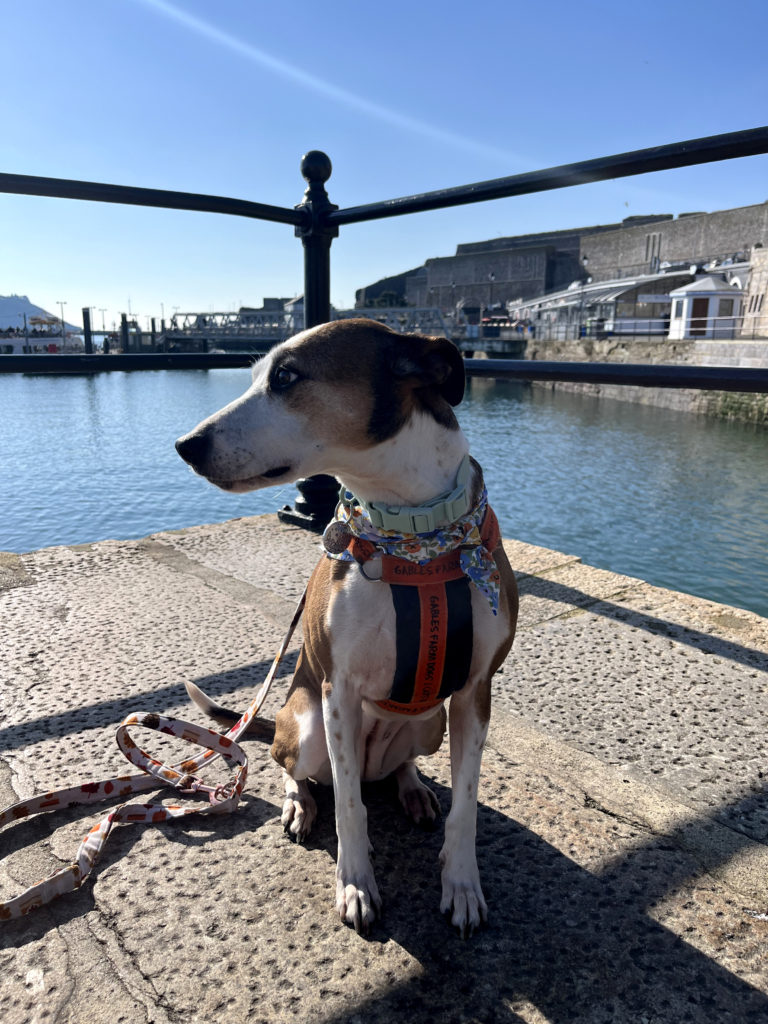
4: Choose a photo that captures the subject’s personality:
A portrait is more than just a representation of the subject’s physical appearance. It should capture the essence of their personality and character. Choose a photo that showcases their unique traits and personality. Look for photos that capture a natural and genuine expression, and avoid photos with forced or fake smiles: a genuine smile or expression will make the portrait look more natural and alive.
I would be happy to include pets favourite toys in your portrait, or to work from action shots of horses showjumping, or dogs playing or doing agility. I’ve created some exciting commissions like a dog hiking on a blustery day with their ears blowing in the wind; captured a collie’s signature ‘head tilt’; or a dog rolling on their back for belly rubs, as this is what their family remembers them best for.
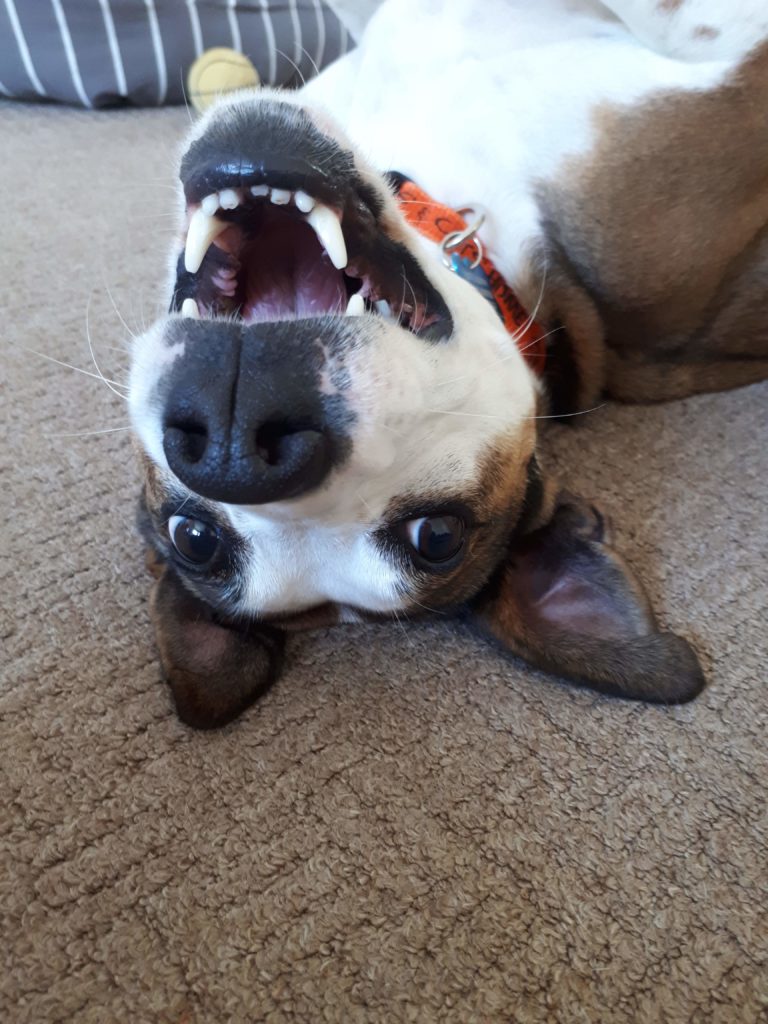
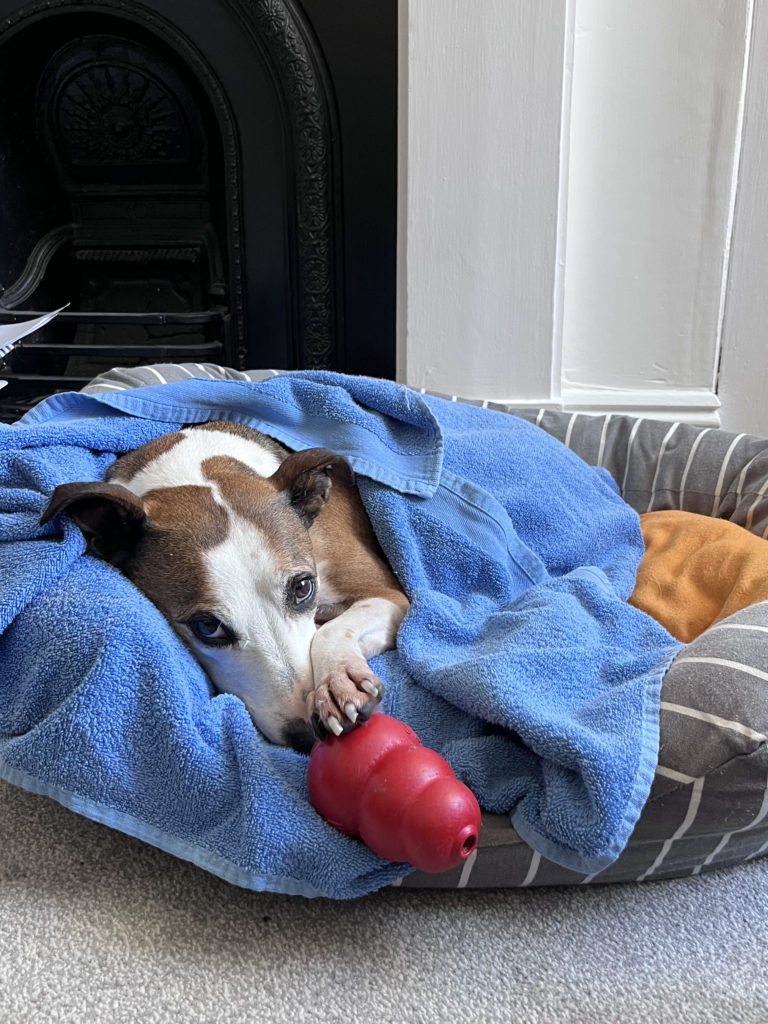
5: Look for a meaningful moment:
Consider the context of the photo. Does it capture a special moment or memory? Is it a beloved pet’s favourite spot or activity? Events such as weddings or milestone birthdays make fantastic portrait gifts. Including meaningful context in your piece of art will make it even more special and memorable.
6: Use professional pet or family photos:
If you have had a professional photoshoot, it may be possible for me to create your portrait using these as a reference photo. We will need the photographer’s permission, but I have collaborated with many photographers in the past who were thrilled for their work to be used as a reference photo for a portrait! If you’re near Devon, I can also recommend local pet photographers (such as Nicky Woods) or family photography studios.
In conclusion, choosing the perfect photo for your portrait is not an easy task, but it is also a crucial one.
By following these tips, you can choose a reference photo that will help create a beautiful and meaningful portrait that captures the essence of your subject. Remember, a high-quality photo with good composition, lighting, personality, and context will result in a stunning and meaningful pet or family portrait that you will treasure for years to come.
It may take some time to take a new photo, especially of a pet who won’t stay still! or to hunt through your belongings for an old favourite, but it certainly makes a difference to the level of detail that can be captured in your portrait. I have taken photos myself for portraits gifted to friends and family, and have spent hours following cats around conservatories with their favourite treats, rustling packets, throwing leaves and toys to get dogs and horses’ attention, and have gone through hundreds of blurry photos to get the perfect shots – but it’s worth it when you see the beautiful portrait that was produced from them!
To summarise:
- Choose a high-quality photo with good resolution and clarity.
- Consider the lighting in the photo and aim for natural light or soft indoor lighting.
- Look for interesting and dynamic compositions.
- Choose a photo with a natural and genuine expression or emotion.
- Find a meaningful moment or setting that adds depth and significance to the portrait.
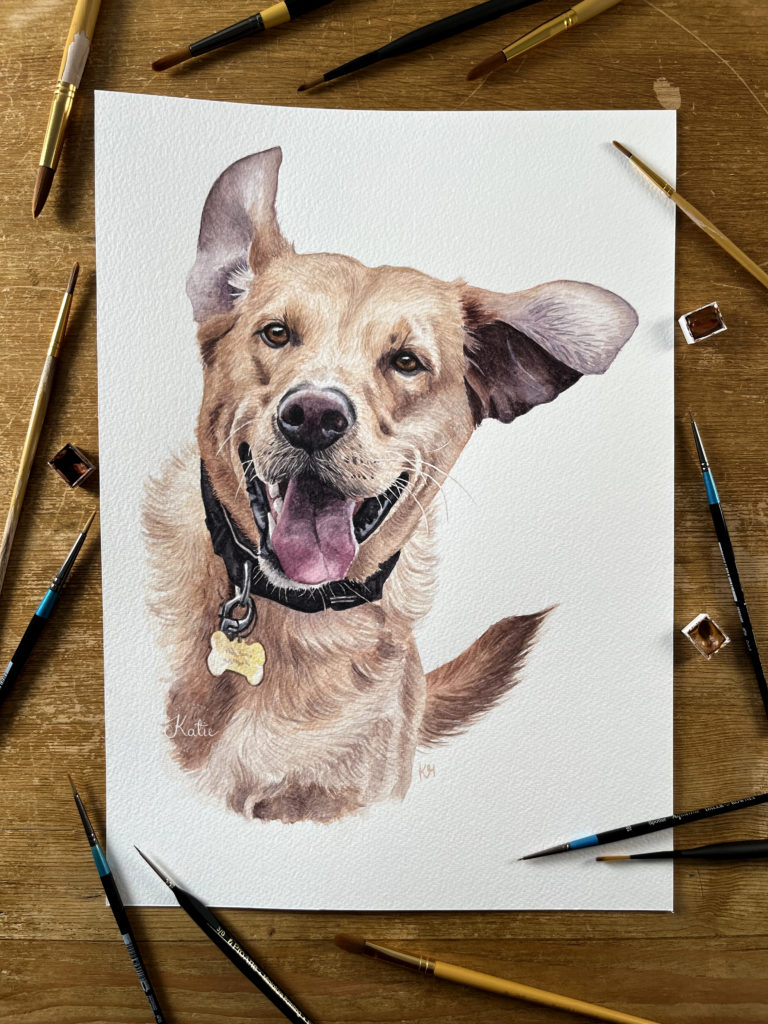
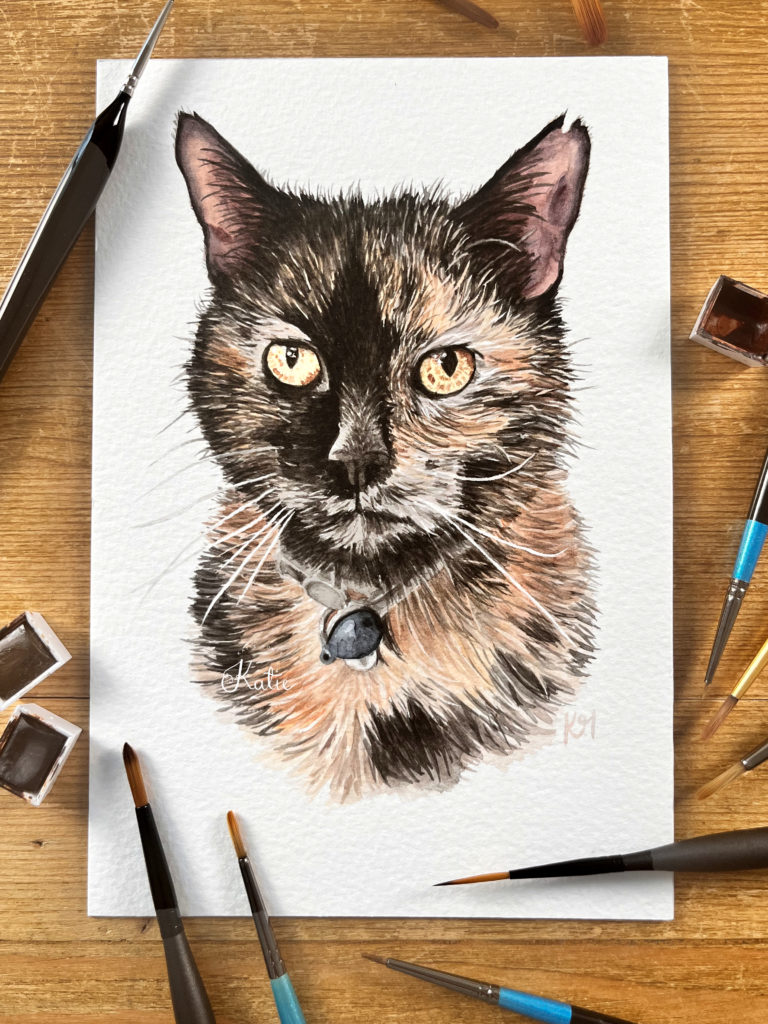
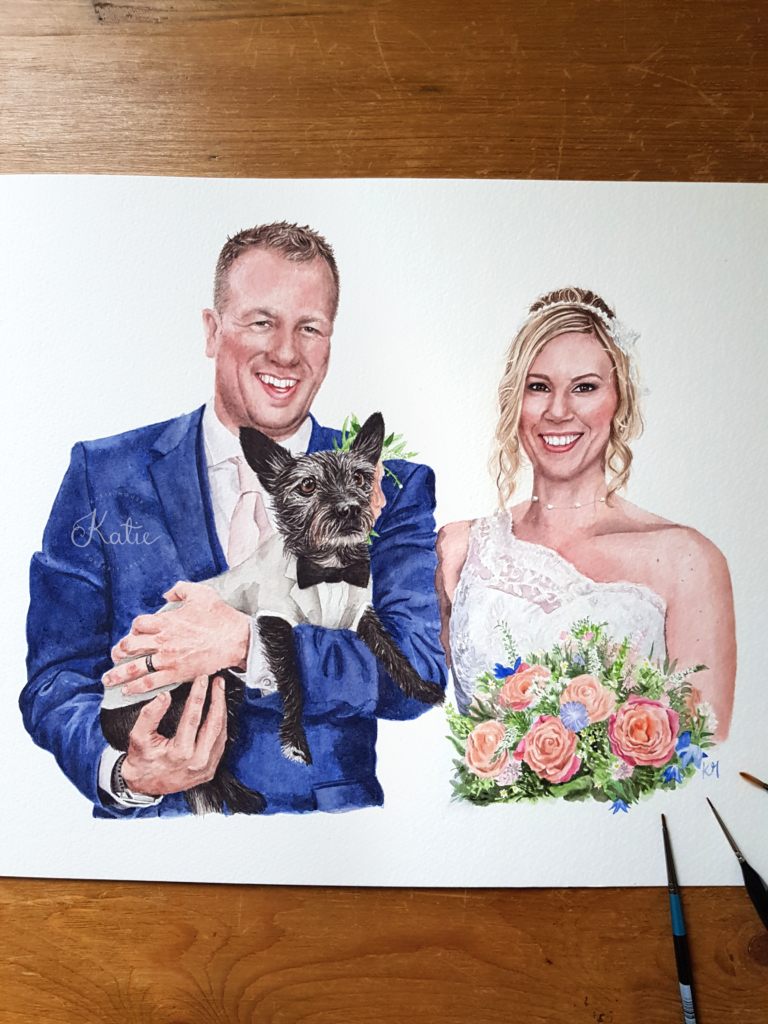
If you’re looking for a bespoke pet or family portrait, please find more information at www.katiehouseportraitartist.co.uk and get in touch via email at hello@katiehouseportraitartist.co.uk
